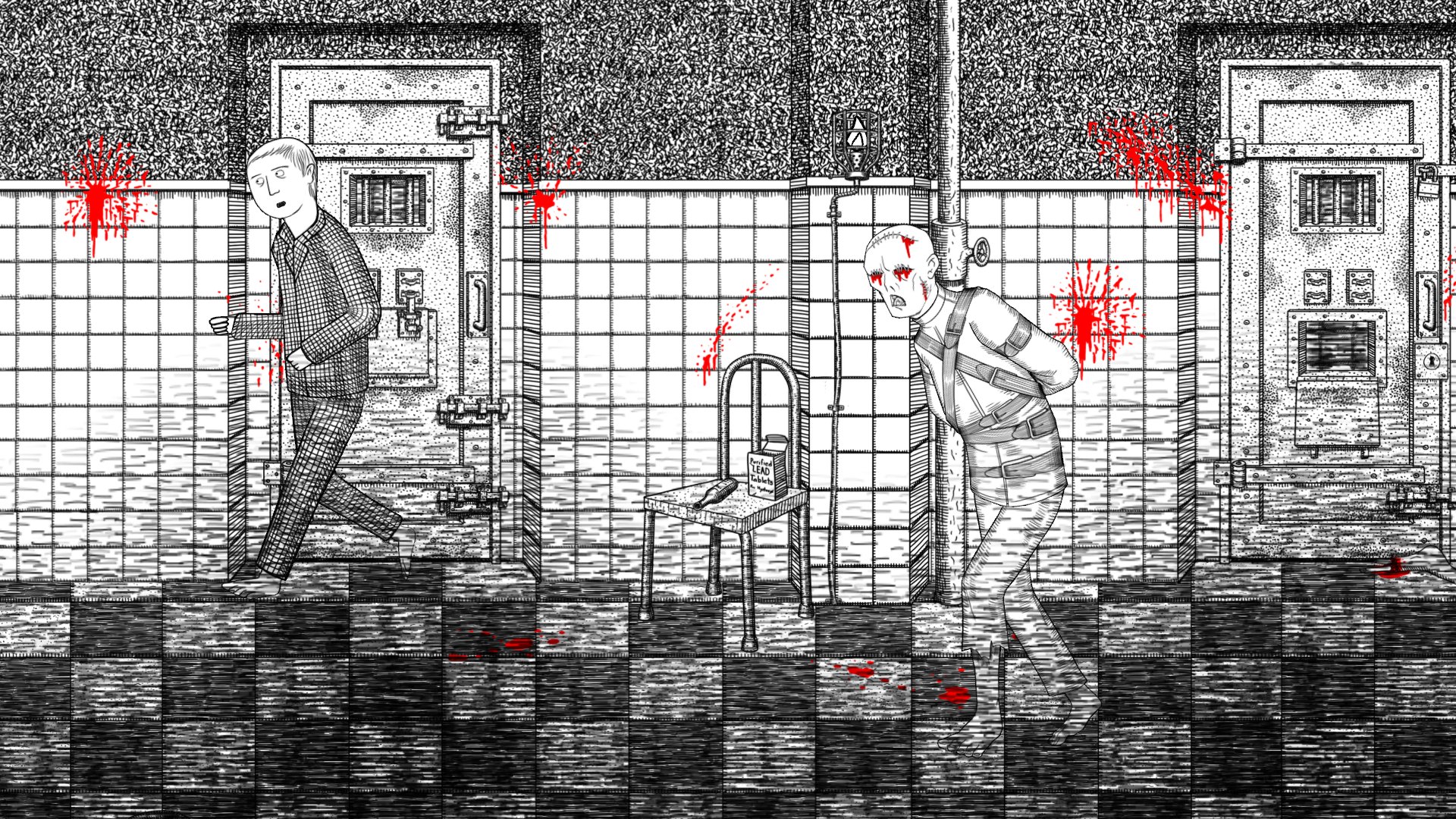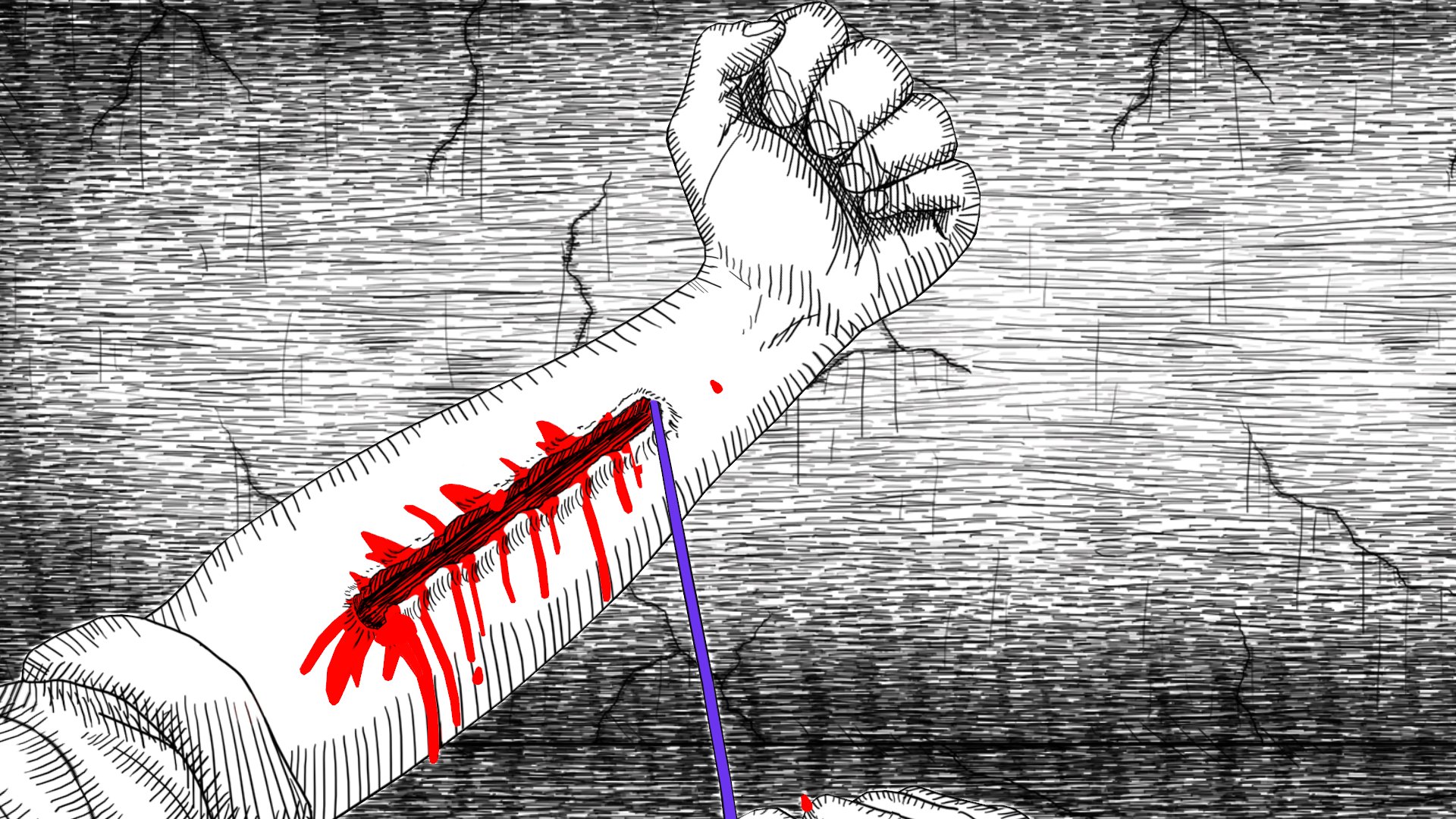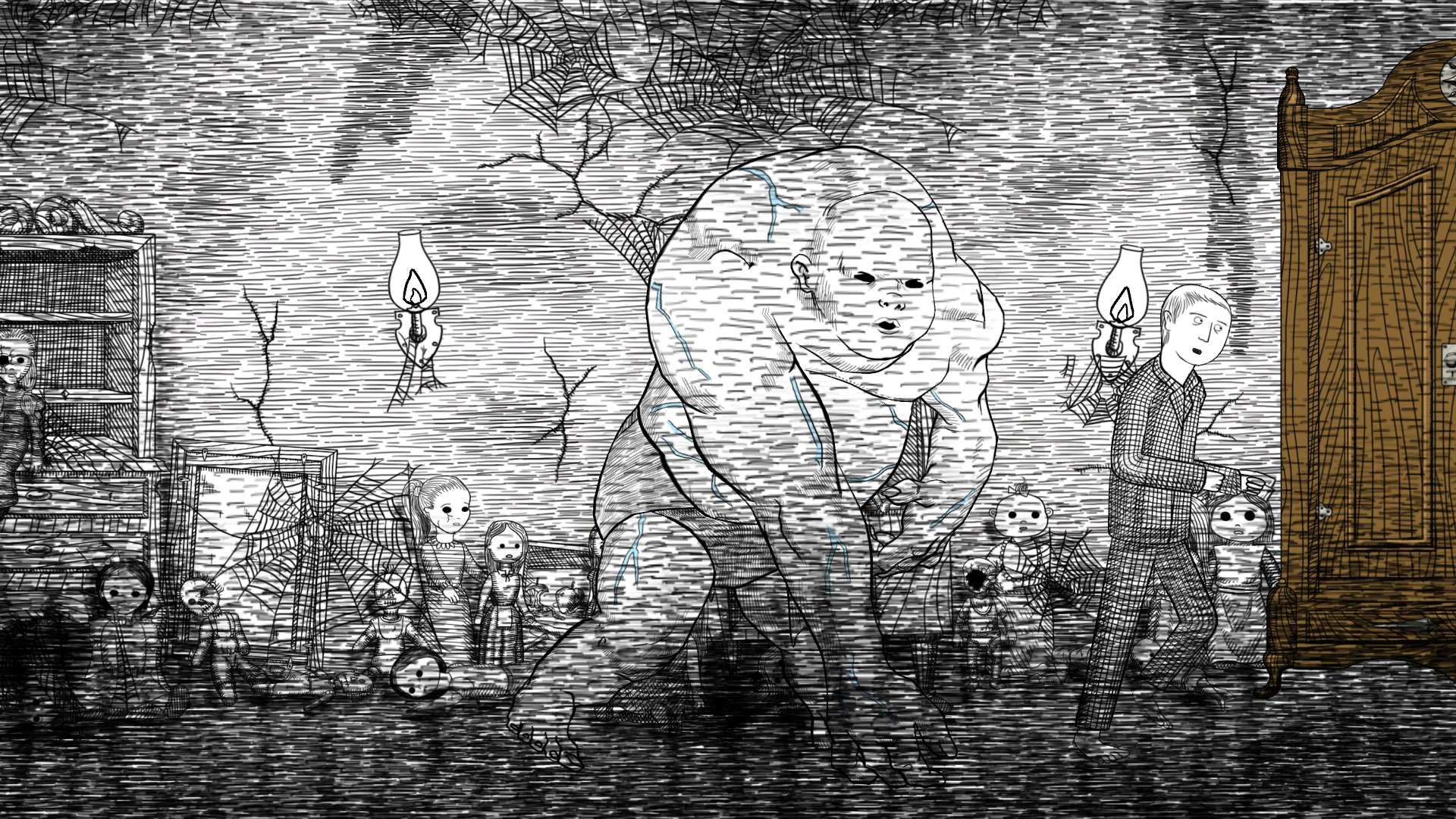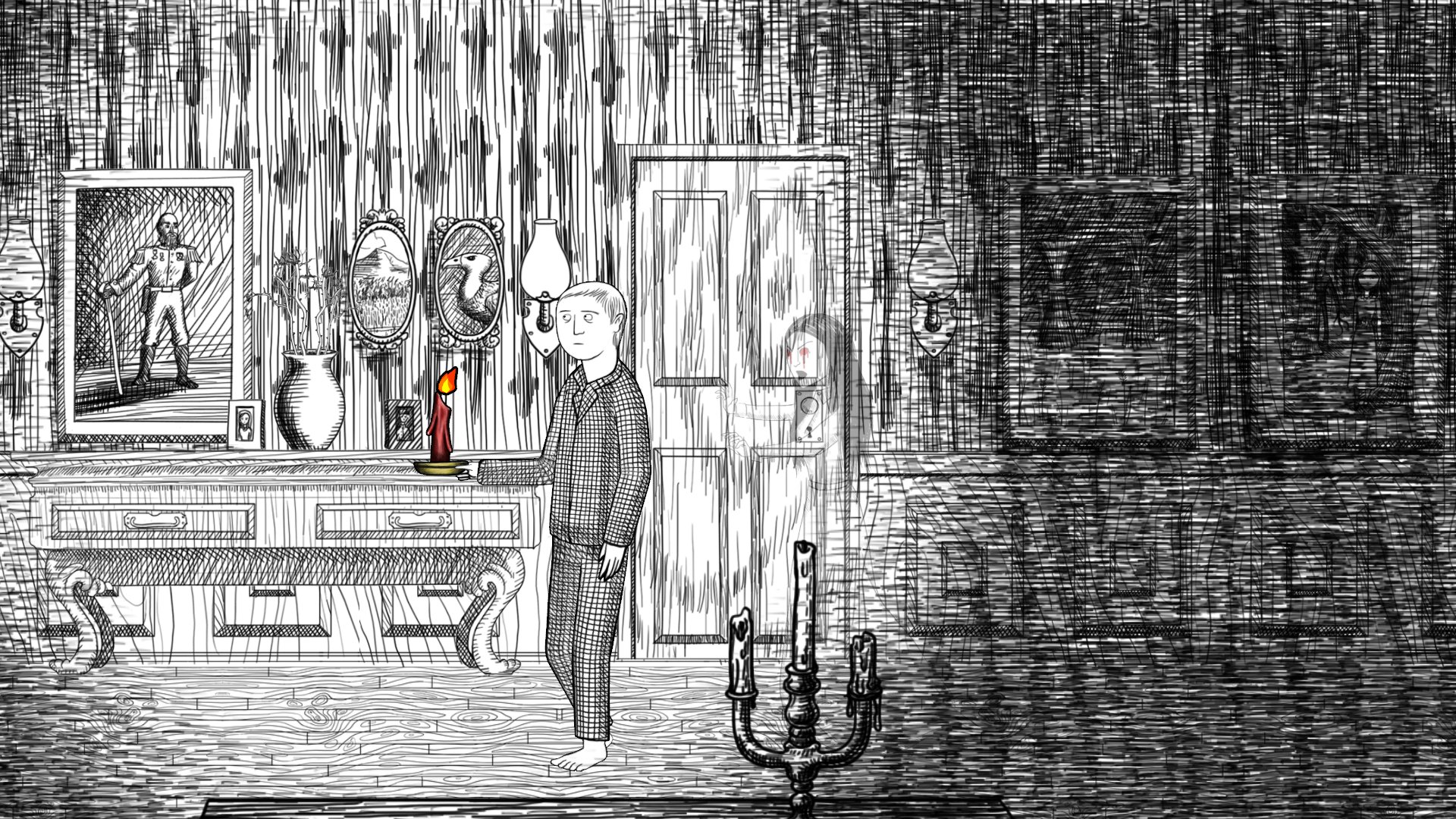I dreamed of playing any other game.
The hallway connecting my parent’s room to my own stretched for what seemed like miles, the inky blackness of the shadows stretching and warping my perception of distance. My Ninja Turtles nightlight was losing the fight against the ever-consuming darkness; it was too late to turn back. I pressed forward down the hall, my hand running along the wall for guidance.
Just before the hallway’s end, there was an opening to the left. The top of the staircase. Even though I was close to the safety and warmth of my parent’s bedroom, my curiosity drew me to the light emanating from around the corner. I turned, and saw a full moon pushing up against the window above the front door. The entire living room below remained in darkness, except for the pillar of light that now shone on the tile floor. There was nothing there, except a doll my sister had left behind.
A doll that turned around to me and smiled.
Nightmares have a way of exposing our fears when we are at our most vulnerable: sleeping. And while some of these fears are apparent (a childhood viewing of Child’s Play set me up to hate My Little Buddy dolls for life… not my buddy), others are hard to communicate. Neverending Nightmares, a re-release of a PC game now making its way to Playstation 4 and Vita, is a very real attempt at making creator Matt Gilgenbach’s battle with depression and obsessive compulsive disorder a tangible, frightening experience. And for the most part, it succeeds. However, as a game, Neverending Nightmares often fails to live up to the promise of its concept, its deeply personal subject matter marred by barely-there gameplay and cliché-ridden scares.
You play as Thomas, a young man who wakes up from a nightmare only to find himself in another nightmare; it’s like the movie Inception if it were released around Halloween. Players wander around opening doors and triggering jump scares. There are branching paths to take and several endings to experience, but the game remains largely linear in both scope and execution. While the game’s linearity may serve the story, it becomes a detriment to gameplay. There are no puzzles to solve, no inventories to manage. There are moments in the game where players will have to avoid enemies, but like the game itself, these moments are sparse.
This is Neverending Nightmares’ biggest problem: There’s just not a whole lot there. The game can be completed in an hour, and that includes unlocking the multiple endings. Gameplay can be boiled down to walking; something I never thought would be such a chore until I met Thomas the Lethargic Limp Master. The only reason why this game took me an hour to finish was because Thomas walks like he just stepped on a Lego. The game’s inclusion of a sprint button is a joke, because he immediately starts wheezing like he forgot his inhaler during gym class.
Not like he needs to run; even the game’s enemies are in no rush to kill you. Most are content with meandering along a very obvious pre-determined pathway. If they do manage to kill you, chances are it was by design. Death in Neverending Nightmares means waking up right where you left off, except when it needs to move the story along. It was that realization, that nothing was left to chance and every freaky occurrence was by a very rigid design that broke the game for me.
Plenty of games have gotten away with anemic gameplay because their vision was so unique, but Neverending Nightmares suffers from an identity crisis. Despite its deeply personal subject matter, Neverending Nightmares borrows too heavily from traditional horror tropes. Every jump-scare cliché in the book is on display and repeated ad nauseam. Creepy dolls? Check. Voices of unknown origin whispering something vague into your ear? Check. Wandering through an insane asylum where the inmates have broken free? Check. The game’s audio, which usually does a very good job of creating a sense of unease, suffers from its overuse of said whispers and broken music box sounds. Even the art direction plays it fast and loose with a style that can only be described as Edward Gorey taking a red crayon to his early works.
It’s not all bad, though. There are some legitimately uncomfortable moments that had me cringing and my fear of dolls triggered a palm sweat that no amount of napkins could absorb. And as borrowed as they are, some of the recurring motifs are explained by the game’s end, justifying their initially random presence. These little nuggets of truth were too few and far between, however, and the sense of dread that crept through me was not by the game’s design but by my own realization that I may have to play through it all again.
I hesitate to call Neverending Nightmares a “bad game.” Despite its flaws, it remains a unique experience and a rare, intimate look into an illness that is often misunderstood by media.
-
Some well-earned jump scares
-
Motifs that would make your English teacher blush
-
Short enough to not be frustrating
-
Play with headphones for maximum fright
-
Borrows too heavily from typical horror tropes
-
Slow movement hinders rather than helps the mood
-
Short enough to make you question your purchase
neverending-nightmares-vita
-
neverending-nightmares-vita #1

-
neverending-nightmares-vita #2

-
neverending-nightmares-vita #3

-
neverending-nightmares-vita #4

-
neverending-nightmares-vita #5

-
neverending-nightmares-vita #6

-
neverending-nightmares-vita #7










